Top 10+ Largest Wind Farms in Canada - Offshore/Onshore
| Table of Contents |
Wind energy plays a crucial role in reaching global net-zero carbon emissions. So, countries worldwide are entering the technological and environmental race to achieve these goals.
Canada is one of the world leaders in producing and using renewable power due to its diversified geography with hydro, biomass, wind, and solar energy sources.
Wind Energy Industry in Canada
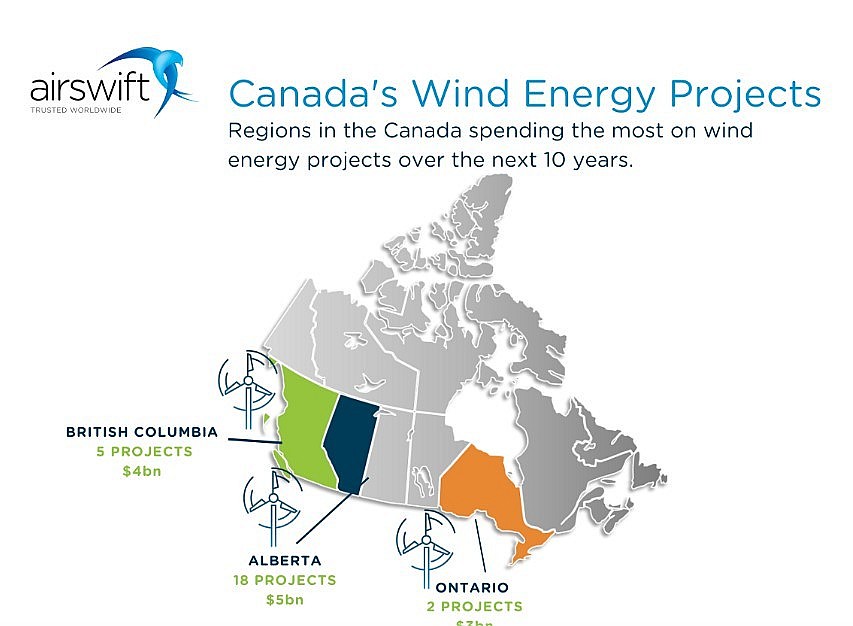 |
| The regions in Canada spending the most on wind power projects over the next 10 years are Alberta, British Columbia, and Ontario. |
Although it is still early in the exploration of its vast wind energy resources, Canada has made rapid progress in this field and is now among the world's major producers. The area had about 14,304MW of installed wind energy capacity at the end of 2021.
In Canada, wind energy generates 3.5% of the nation's electricity, making it the second-most significant renewable energy source in the country.
Ontario, Quebec, and Alberta are the three provinces with the most wind power capacity.
To support clean energy, Canada is also making significant investments in new energy storage technologies. The cheapest and fastest-growing source of new electricity generation in Canada is wind energy. Over the past ten years, Canada has installed more wind energy capacity than any other country.
Market Overview
Due to the high-quality resources on its coasts and offshore, Canada has a lot of potential for offshore wind development, but none have been constructed to date.
7.7 percent of Canada's total electricity capacity is generated by onshore wind. Along with solar PV, wind energy is one of the renewable energy sources in Canada that is expanding the fastest. This is probably because wind energy is very scalable. With an installed capacity of 12,816 MW, Canada's onshore wind capacity increased from eight wind farms in 1998 to 299 in 2018. This is largely because Ontario, Alberta, and Quebec, the nation's top wind markets, have historically exhibited strong wind leadership.
Offshore wind policy is still being developed. The Canadian Energy Regulator Act (the Act), which took effect on August 28, 2019, now governs all aspects of the offshore wind industry in Canada. The implementation of this Act with regard to offshore renewable energy projects is supported by the Offshore Renewable Energy Regulations (ORER) initiative. A new mandate covering new energy developments, such as the regulation of offshore renewable energy, has been given to the National Energy Board, which is now also known as the Canada Energy Regulator.
The development of four offshore wind projects, one in each of the Atlantic provinces, has been announced by Atlantic Canada Offshore Developments (ACOD), despite the fact that no offshore wind farms have been constructed to date. Additionally, a 2020 press release from Northland Power Inc. confirmed the company's plans to acquire and develop an early-stage offshore wind project off the Pacific coast of Canada. The Atlantic, Pacific, and Gulf of Saint Lawrence coasts, as well as their surrounding areas, have a lot of potential for development.
♦ Check More: Top 10 Biggest & Majestic Hydroelectric Plants In Canada
Offshore Wind Farms in CanadaThere are 34 offshore wind farm projects in Canada, but none are currently in operation, none have reached the point where the turbines can be connected and produce electricity, none are in the building stage, and none have either received consent or have applied for consent. |
Top 10+ Biggest Wind Energy Farms in Canada
The Canadian Renewable Energy Association reports that 317 wind energy projects in Canada are currently generating electricity. With 166 wind turbines, Black Spring Ridge in Vulcan County, Alberta, is the largest wind farm.
For the next ten years, 39 onshore and offshore wind power projects totaling $16 billion are planned.
1. Nova East Wind (Offshore)
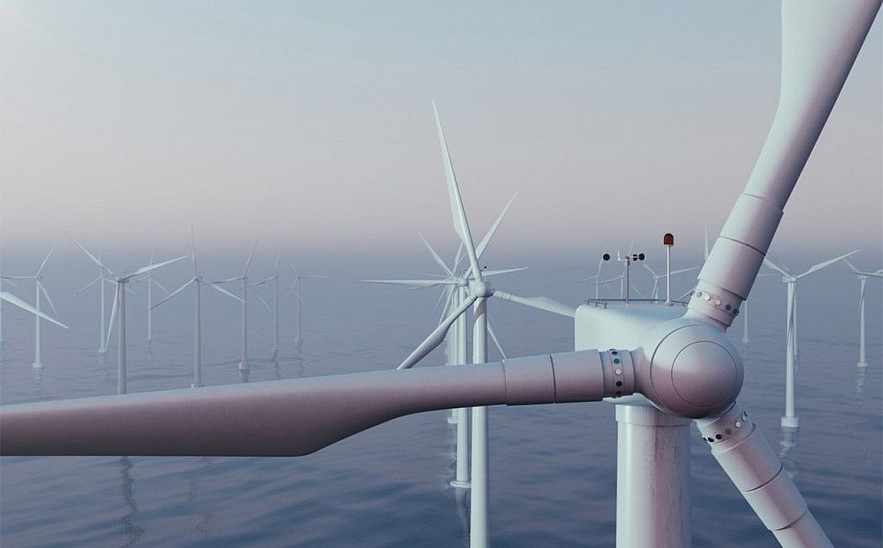 |
| Nova East Offshore Wind Farm |
In Halifax, in April 2023, proponents unveiled the first proposed offshore wind farm for Nova Scotia.
By the end of the decade, Nova East Wind hopes to add 20 to 25 floating wind turbines to the province's Eastern Shore, 25 kilometers off Goldboro, and contribute up to 400 megawatts of electricity to the grid.
The project would account for about 20% of Nova Scotia Power's 2400 megawatts of current generating capacity.
The majority-owned SBM Offshore, an international provider of ocean energy services with headquarters in Amsterdam, and the Irish developer DP Energy formed the business together.
The project will cost between $1 billion and $1.5 billion, according to Ambroise Wattez, director of project development at SBM.
The electricity will replace energy currently produced by coal-fired plants owned by Nova Scotia Power, which must shut down by 2030, for domestic use. An underwater cable would carry the electricity along the ocean floor. The path follows a section of an abandoned offshore gas pipeline.
2. Blackspring Ridge Wind Project (Onshore)
 |
| The Blackspring Ridge Wind Project |
EDF EN Canada and Enbridge have partnered to own the 300MW Blackspring Ridge wind farm in Vulcan County, Alberta, Canada.
The $600 million project is both the largest wind energy investment in the province and the largest wind project in Western Canada with 166 wind turbines. In December 2021, the Alberta wind farm's capacity was increased to 353 MW until the Whitla project was finished.
Beginning in May 2013, the project was put into service in May 2014. More than 1,000 GWh of clean energy per year, enough to power 140,000 Albertan homes, is anticipated to be produced by the farm. The project generated over 350 construction jobs in addition to 20 permanent operations and maintenance positions.
The wind farm is located in Vulcan County, Alberta, on 48,000 acres of private land, about 50 kilometers north of Lethbridge. There are 166 1.8MW Vestas V100 wind turbines in it. Each turbine has a 7,850m2 swept area, an 80m hub height, a 100m rotor diameter, and a maximum 49m blade length.
Around 30 kilometers (km) north of Lethbridge, Alberta, a substation will be constructed. It will include 15 circuit breakers with a 34.5kV capacity, three 240kV motorized switches, two 240/34.5 kV 120/160/200 megavolt ampere (MVA) transformers, and one 240kV circuit breaker.
3. Buffalo Plains (OnshoreWind Farm)
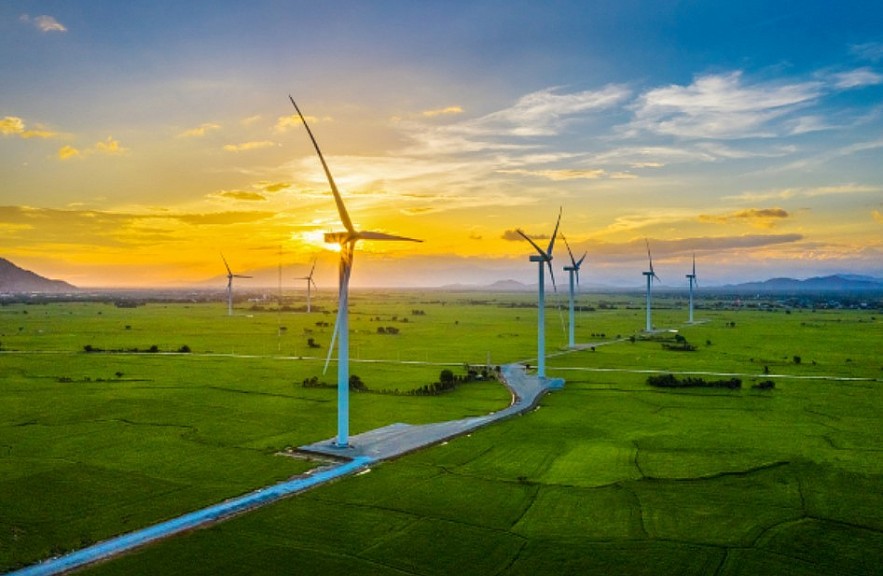 |
| Buffalo Plains Wind Farm |
The largest single-phase wind farm in Canada is located at Buffalo Plains.
The largest wind farm in Canada was initially developed by a German company, ABO Wind.
The 83 turbines that make up the 514.6MW Buffalo Plains project in Alberta each have a 6.2MW capacity. The $500 million project development cost is an estimate. When the project was prepared for construction in July 2022, ABO WIND sold it to Copenhagen Infrastructure Partners (CIP).
Near Lomond, Alberta, on 17,500 acres of privately owned farmland, a wind farm will be constructed. In 2023, it is expected to start operating.
Location: near Lomond, Alberta
Developer: ABO Wind
Owner/Investor: Copenhagen Infrastructure Partners
4. Wild Rose (Onshore Wind Farm)
This project, which will be run by NaturEner, will have a maximum installed capacity of 409MW in Alberta. There are two phases to the construction: Wind Rose 1 and Wind Rose 2.
With 70 Alstom ECO110 3MW turbines, access roads, and underground interconnections, Wild Rose 1 is a 217.6MW wind power project.
A 192MW wind power project called Wild Rose 2 is being built with 63 Alstom ECO110 3MW turbines.
The Wild Rose Onshore Wind Farm is currently in the development phase with a $630 million investment, and operations are scheduled to begin in 2023.
5. Seigneurie de Beaupré
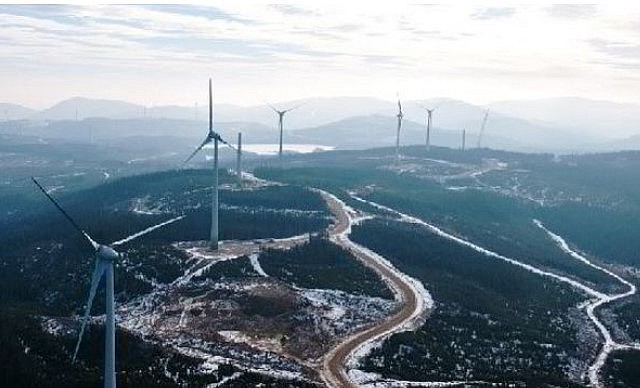 |
| Seigneurie de Beaupré in Quebec |
The Seigneurie de Beaupré wind farm is located between Beaupré and Baie-Saint-Paul in Quebec. It was commissioned in 2013.
In October 2015, it was expanded from a capacity of 340MW to 363.5MW. The farm is owned by Canada-based Boralex (50% stake), Gaz Métro (46.8%) and La Côte-de-Beaupré (3.2%).
Location: between Beaupré and Baie-Saint-Paul, Quebec
Owner: Boralex, Gaz Métro
6. Riviere du Moulin (Onshore)
Lac-Pikauba and Lac-Ministuk are the locations of the Riviere du Moulin wind farm. Its two phases of development resulted in 150MW and 200MW of capacity.
When the project was finished in 2015, Riviere du Moulin was Canada's biggest wind farm. EDF, a developer based in Paris, will retain ownership of the remaining 57.5% of the wind farm after selling a 42.5% stake to DIM WIND LP and iA Financial Group.
The farm has 175 turbines, which together can generate enough electricity to power about 77,700 homes in the area. A single 20-year power purchase agreement with Hydro-Quebec Distribution governs the sale of its output.
Location: Lac-Pikauba and Lac-Ministuk, Quebec province
Owner: EDF, DIM WIND LP and iA Financial Group
7. Sharp Hills Onshore Wind Farm
In Special Areas 3 and 4, close to the hamlets of Sedalia and New Bridgen, Alberta, this wind farm will have up to 300MW of capacity. In the average Alberta Province, there are 160,000 homes that can be powered by the wind.
Around 300 construction jobs will be supported by the project, and it could generate up to 20 new long-term local jobs over its lifetime. The wind farm, run by EDP Renewables, has 71 Enercon E138 4.2MW wind turbines.
The project's new substation, Sedalia 363S, will be used to transmit the electricity it produces to the 240 kV ATCO transmission line. The project is expected to be finished in 2023.
Participating in the project are about 50 supportive families representing 47,000 acres. The region will develop with the help of usable, clean energy. The Sharp Hills Wind Farm offsets its annual carbon emissions by removing more than 175,000 cars from the road.
8. Wolfe Island Shoals (Offshore/Onshore Wind Farm)
 |
| Wolfe Island Shoals |
The 300MW Wolfe Island Shoals project by Windstream will be an offshore wind farm in Lake Ontario. The turbines will be constructed on gravity bed foundations that are semi-floating, or "GBFs."
Leading engineers whose technology is used in offshore wind turbine installations all over the world specifically designed these GBFs.
The Wolfe Island Shoals Offshore Wind Farm has been put on hold while it waits for government approval to move forward.
9. Queen Charlotte Islands (Offshore Wind Farm)
This project involves the construction of an offshore wind farm with up to 110 turbines and a total 396MW capacity.
On the Dogfish Banks of the Hecate Strait, close to the Queen Charlotte Islands, it is situated in waters with a depth of about 20 meters. When the project is fully operational, it will produce 1,750MW of electricity.
10. Yarmouth (Offshore Wind Farm)
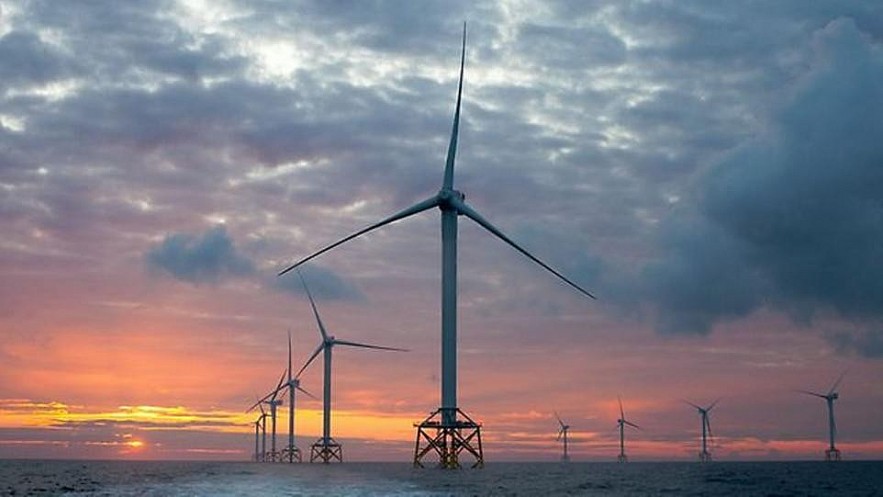 |
| Yarmouth (Offshore Wind Farm) |
Located 20 kilometers off the coast of Yarmouth, Nova Scotia, this project is a 1 GW offshore wind farm with a wind resource of 10 m/s and a depth range of 44 to 60 meters.
New England will receive electricity from the Yarmouth Offshore Wind Farm. The Can-Am link, a 322 km subsea cable to the US, will be used for this.
The project is in planning and will require an investment of $4 billion and more than 120 turbines. It is anticipated that operations will begin in 2025.
The turbines will be located in shallow waters, less than 30 meters deep, on a gravity base. It will be constructed in stages and will be located away from major shipping lanes and commercial fishing grounds. Beothuk Energy runs the business.
More Biggest Wind Farm Projects in Canada
Hecate
Potential size: 400 MW
Location: British Columbia
Developer: Northland Power Inc
Status: Early Stage Development
Sea-Breeze Tech Demonstration Project
Potential size: 100MW
Location: Nova Scotia
Developer: Brezo Energy
Status: Early Stage Development
St. George’s Bay
Potential size: 180 MW
Location: Newfoundland & Labrador
Developer: ACOD
Status: Paused
Final Thouhts
In Canada, wind energy accounted for 5.97 percent of all electricity generated. Over the previous ten years, this number grew steadily.
The Canadian Renewable Energy Association reports that as of August 2022, 317 wind energy projects in Canada were generating power on a national scale. With 166 wind turbines, Black Spring Ridge in Vulcan County, Alberta, is the largest wind farm. For the next ten years, approximately 39 onshore and offshore wind power projects with a combined project value of USD 16 billion are planned.
The nation has been looking for chances and potential locations for new projects outside of its borders. The development of wind energy projects in Alberta is expected to attract about USD 8.3 billion in investment by 2030, making it an appealing market for investors in recent years. In addition to Alberta, huge investments are anticipated in Saskatchewan, where a 50% increase in renewable capacity is the province's goal for 2030.
The Lanfine Wind Project in Oyen's Special Area 3 in Alberta entered its final construction stage in October 2022 with the lifting and installation of the wind turbines in their final locations and the attachment of the blades to the rotors. In 2023, this new building is anticipated to be in use. The investment cost for the project is about USD 253.12 million.
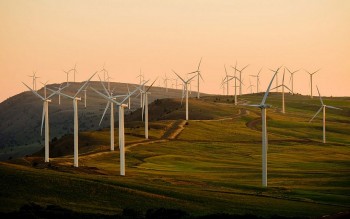 Top 10+ Largest Wind Farms (by Capacity) in the World Today Top 10+ Largest Wind Farms (by Capacity) in the World Today Join KnowInsiders.com to find out the top largest wind farms around the world. These farms not only provide electricity, but also are places that many ... |
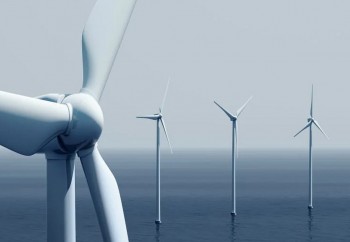 Top 10 Biggest & Most Beautiful Offshore Wind Farms in the World Top 10 Biggest & Most Beautiful Offshore Wind Farms in the World Explore the largest and most beautiful coastal wind farms in the world. This is not only a place that provides heavy winds but also an ... |
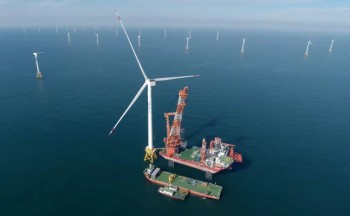 What is the Largest Wind Turbine in the World - MySE by MingYang What is the Largest Wind Turbine in the World - MySE by MingYang A new offshore wind power project in China is under construction. This is the project with the largest offshore wind turbine in the world, with ... |
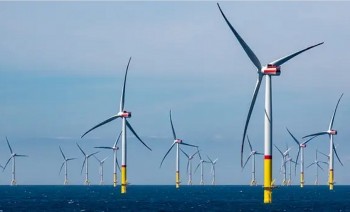 Top 5 Biggest & Majestic Offshore Wind Farms in the US Top 5 Biggest & Majestic Offshore Wind Farms in the US Explore the largest and most majestic Top Offshore Wind Farms in America today and for the foreseeable future. Offshore Wind Farms not only provide clean ... |























